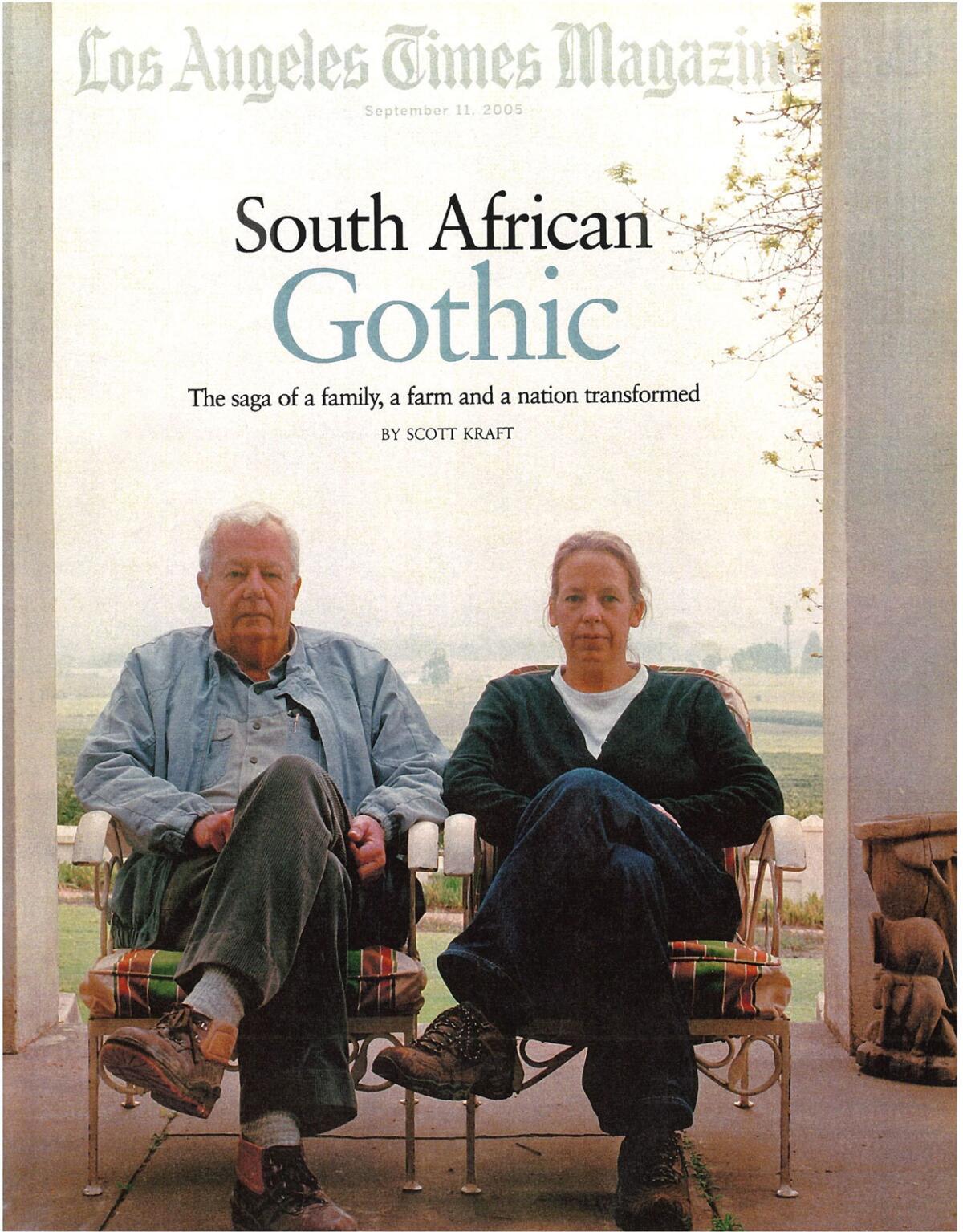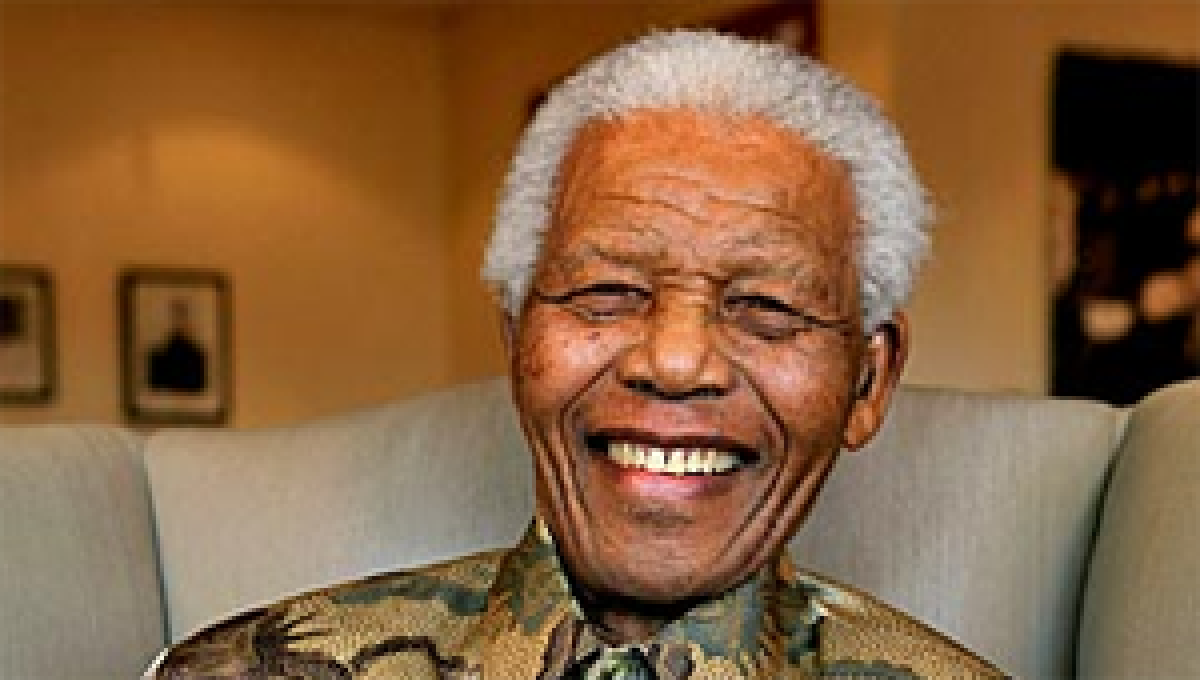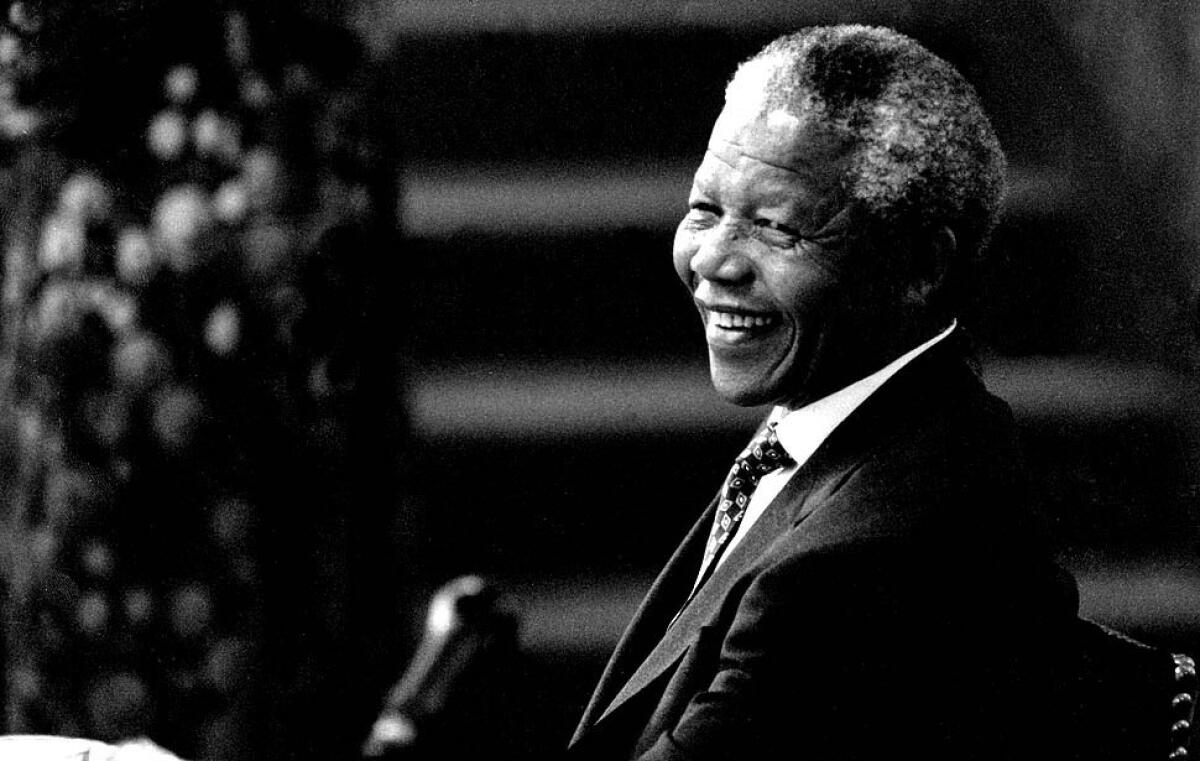Memories of Mandela and the country he loved
A Times correspondent who was in South Africa during apartheid recalls the day Nelson Mandela walked free and the remarkable years that followed.
When I moved to South Africa in 1988, I shared the hope of many correspondents dispatched there: to stay long enough to capture the historic end of apartheid and the release of Nelson Mandela.
Two years later, on a beautiful Sunday afternoon, Mandela was driven by motorcade from his prison in the countryside to Cape Town. I was in the crowd of tens of thousands waiting on the downtown parade grounds. We were packed so tightly that I could barely lift a notebook to write Mandela’s first words as a free man, words that appeared in the Los Angeles Times the next day.
"I stand here before you not as a prophet but as a humble servant of you the people.… I therefore place the remaining years of my life in your hands."
My family moved away from South Africa four years later to our next assignment, in Paris. But I felt bound to the country and its destiny for reasons beyond its remarkable transformation: Our children had been born there. Our daughter was a toddler when Mandela walked free. Her younger brother was born during the talks to create a new constitution.
Those memories stayed with me, and I returned frequently to see what would happen. Would Mandela be able to succeed where other leaders in Africa had failed? Could he meet the towering expectations of blacks? Could he keep whites from fleeing?
Our daughter also would feel bound to South Africa. After graduating from college a few years ago, Kate returned to Johannesburg to teach African history, politics and government to high school students. Only recently, I asked her what drew her to South Africa. She was, after all, not quite 5 when we left.
People spend their whole life either running away from where they were born or running toward it … I wanted to run toward it."— Kate Kraft, on returning to teach in South Africa
She believed the South Africa that Mandela had helped create was a place she could belong.
"People spend their whole life either running away from where they were born or running toward it," she said. "I wanted to run toward it."

A day after Mandela's release, I got my first close-up look at him. He was sitting under a shade tree in Archbishop Desmond Tutu's backyard near Cape Town.
At 71, Mandela walked and talked deliberately, measuring each word like a man used to quiet contemplation. As he answered reporters' questions that morning, it became apparent that he knew his country's future was on the line. And he seemed already to be contemplating a strategy.
He told us he had been heartened by the white South Africans who had lined the roads to greet him the day before.
"I expected that … from blacks, but the number of whites who seem to feel that a change is absolutely imperative surprised me," he said. On the parade grounds, he had urged whites "to join us in shaping a new South Africa. The freedom movement is a political home for you too."
Over the next four years, Mandela would be tested as he and President Frederik W. de Klerk set out to negotiate a new constitution that would unseat the white government that had been in power for four decades and give the black majority a vote for the first time.
Many South Africans — black and white — were in no mood for compromise. The talks often veered perilously close to collapse. Mandela and De Klerk exchanged angry words in public; for long periods, they rarely spoke in private.
Militant black critics of Mandela saw no role for whites in South Africa. Amy Biehl, a young Fulbright scholar from Newport Beach, was killed by a township mob simply for being white. Thousands of blacks died in internecine clashes between Mandela's African National Congress and the Inkatha Freedom Party, which had done business with the white government during apartheid.
On the other side, De Klerk's critics included armed right-wing white militants who vowed to die rather than allow a black government to take power.
South Africa's survival would depend on Mandela's ability to create a society where blacks would have more opportunities but where whites would feel at home as well.
It often seemed that one spark could destroy everything. On a Sunday morning in 1993, three years after Mandela's release, a popular ANC leader named Chris Hani was gunned down in his driveway. The shooter was a white man who had ties to a member of Parliament.
I had met Hani several years earlier in Zambia, where the ANC leadership lived in exile until Mandela's release. He was a leader of the ANC military wing. I asked about a car bomb that had killed two white civilians at a rugby match in Johannesburg. The ANC's policy was not to target civilians.
"It was our operation," he told me, with his usual directness. "And it was wrong."
When he returned to South Africa, his public commitment to negotiating with the white government helped Mandela win over militant ANC members.
Hani's killing paralyzed the nation at a critical moment. Constitutional talks had been suspended and it wasn't clear when, or whether, they would resume.
The country waited to hear how Mandela would respond.
His simple and powerful call for racial unity that night echoed what we had heard under that tree in Tutu's backyard.
"We must not permit ourselves to be provoked by people who seek to deny us the very freedom for which Chris Hani gave his life," he said. "With all the authority at my command, I appeal to all our people to remain calm and to honor the memory of Chris Hani by remaining a disciplined force for peace."
He singled out Hani's white neighbor who had risked her life to call police and provide a description of the assailant.
A year later, as votes were being counted in the election that would make him president, Mandela sat down with reporters. He was in a wistful mood. He spoke fondly of prosecutors, jailers and other white South Africans who, over his life, had extended kindnesses to him.
"People respond in relation to how you treat them," Mandela said. "If you treat them with respect, and ignore the negative aspects, you get a positive reaction. So even before I went to jail for 27 years, I could not afford to be bitter."


President-elect Nelson Mandela waves to the crowd with his two deputy presidents — Thabo Mbeki, left, and Frederik de Klerk — after the inaugural sitting of South Africa's first all-race parliament on May 9, 1994. (Alexander Joe / AFP/Getty Images) More photos
When Mandela took office, he had two key goals: show blacks that he would make their lives better and show whites that he would not seek retribution for apartheid.
Instead of an endless search for villains, he created a Truth and Reconciliation Commission so that blacks could air their grievances and whites could confess.
During apartheid, I wrote about a black township called Oukasie, a settlement of 6,000 people that existed to tend to the needs of the 10,000 whites in Brits, a community of tidy homes and brick factories about a half-mile away.
The whites decided that Oukasie was growing too close to the outskirts of Brits. They built a new township, 15 miles down the road, then sent bulldozers to force people to move out of Oukasie. When a court ordered a halt to the bulldozers, the white Brits council cut off water and electricity to the township.
When I returned after Mandela became president, Oukasie had power and water. A new soccer field, tennis courts, library and community center signaled its permanence.
One thing hadn't changed. The secretaries in the town council office were white.
I asked city official Ken Ngubegusha why they had been kept on after blacks took control of the council.
"You can't despise someone who is a professional," he said. "And these women are professionals."

The cover for "South African Gothic" by Scott Kraft, focusing on the Durrs, a farming family in South Africa. Read story »

Even before Mandela walked free in 1990, support for apartheid was waning among younger whites.
I noticed that at the Durr family farm near Cape Town in 1989. The Durrs' teenage daughter Leslee had been expelled from the prestigious Stellenbosch University for leading an anti-apartheid protest. At the time, I wrote about the generational battle between Leslee and her father.
Fifteen years later, I went back to see what had happened to the Durrs. In a story headlined "South African Gothic," I wrote that Leslee had gotten married and had one child. She and her husband remained on the farm, where she ran the family water-bottling operation. She had joined the ANC and was teaching her workers how to fight for better working conditions, even when the target was her own farm.
"My father freaks out when I do that," she told me, laughing. "Any worker agitation is seen as immense disloyalty to the farm."
Still, Leslee's father has become a grudging admirer of Mandela. Once convinced that the ANC despised free enterprise, he has come to believe that Mandela and ANC economic policies had been good for the country and kept it from going the way of neighboring Zimbabwe, where white farms were seized and turned over to blacks, precipitating a financial collapse.
Mandela's example of reaching out to whites, Leslee said, had shown people how they could disagree politically but still get along.
If Nelson Mandela can visit P.W. Botha, then fathers and sons with differences can get along … One doesn't forget, but one forgives."— Leslee Durr
"If Nelson Mandela can visit P.W. Botha, then fathers and sons with differences can get along," she told me. "One doesn't forget, but one forgives."

Mandela's ability to manage white fear was important, but so was meeting black expectations. They wanted all the benefits of prosperity.
Diale Rangaka, an English literature professor in the Soweto township, and his wife, Malmsey, a clinical psychologist, secretly harbored a desire to be farmers. With the fall of apartheid, they set their sights on a vineyard in the Western Cape, a region 800 miles south of Soweto that was known for its winemaking, an industry controlled by whites before 1994.
When the Rangakas arrived in the Cape, a few miles from Mandela's last prison, getting accepted by white winemakers turned out to be the easy part. Some even mentored them.
The black farmworkers needed convincing. Most of them quit; they wouldn't work for a black boss. A mixed-race foreman resigned. He had another problem; he couldn't work for a woman.
The Rangakas persevered. Today their M'hudi wines, named for the heroine of an African novel who succeeds against the odds, are sold around the world.
On my recent visit, Malmsey poured a taste of M'hudi pinotage and reflected on their post-apartheid journey.
"Our friends back in Soweto keep wondering if we've adopted the 'larney' life" of wealth and leisure, she said. "It's very, very hard work. But we love being on the farm."

Mandela’s successors have struggled to build on what he started. Millions still live in poverty. Crime and government corruption remain endemic.
One of Mandela’s most trusted lieutenants in the months after his release was Cyril Ramaphosa, a burly 37-year-old who had founded the mineworkers union and was much feared by corporate, white South Africa.
Back then, on the wall of his office, he kept a framed newspaper editorial cartoon that summed up his reputation. It showed him trying to ride a horse, labeled "the economy," that he had just shot dead. "That'll teach you," he says. "Now, giddyap!"
I had expected that Ramaphosa would be Mandela's successor. He had earned a reputation for pragmatism. His white adversaries in constitutional talks respected his willingness to compromise.
When the party passed him over for Thabo Mbeki as Mandela's heir-apparent, Ramaphosa left politics.
Today, he's probably South Africa's richest man, with investments in mines, energy, real estate and telecommunications. Forbes puts his net worth at $675 million.
A year ago, Ramaphosa, now 61, was elected deputy president of the ANC, the likely successor to Jacob Zuma.

On a trip to South Africa earlier this year, my wife and I spent several days visiting classes at African Leadership Academy, where Kate had taught for three years. Unwilling to give up what she calls the best job in the world, Kate decided to return for a fourth year.
The campus near Johannesburg is serene, with a rolling lawn encircled by red-bricked classrooms and dorms. The boarding school was opened in 2008, and its 200 students come from dozens of countries on the African continent.
The two-year curriculum includes the usual high school subjects, but it pays special attention to learning about Africa and entrepreneurship. Many of the students will head to universities in the United States — but each signs a pledge to return after graduation to help build Africa.
They will take the path that Mandela began clearing on that Sunday afternoon in Cape Town almost 24 years ago and, like Kate, run toward the place they were born.
Sign up for Essential California
The most important California stories and recommendations in your inbox every morning.
You may occasionally receive promotional content from the Los Angeles Times.











